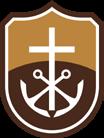




Publisher
Jason D. Curtis
Executive Editor
Jamie Ceccato Perkins ’97
Editorial Staff
Michele Tjin
Kalix Marketing/Sarah Achenbach
Design
Kalix Marketing/Jason Quick
Support Staff
Bernard Nemis
Diane Wilson
Contributing Photographers
Rishabh Anand ’26
Marina Kan ’25
Now and Forever Studios
Michele Tjin
Luanna Vecchi ’27
Contributing Cover Artist
Chris Johnson
Progress is published twice a year by the Institutional Advancement Department for the alumni, parents and friends of Saint Francis High School.
Email us: progress@sfhs.com

Cover:
We chose to use AI-generated art on the cover to explore ways to creatively express an abstract concept, namely applying a new technology in the classroom. To generate the images, we began with the same prompt on different platforms, Photoshop, Midjourney, Bing Image Creator online, DeepAI and Canva. We learned that these generators have different abilities and styles and while they can create art very quickly, nonetheless we went through an iterative process to produce the images that we were after.





President Jason Curtis and three of our educators introduce the innovative ways they are incorporating AI in the classroom. Scan the QR code and check it out!


In June, students saved shrimp to help purify the water in El Yunque National Forest, which is used by 20 percent of Puerto Rico’s population. Lancers on the summer immersion trip to Puerto Rico built a new stream and relocated shrimp living in the forest’s muddy, nonpotable runoff water. The shrimp are critical to the ecosystem by helping clean the water.
Stories from the park staff who care for the plant species and waterways and even rainfall inspired joyful work for the Lancers. “Through service activities like walking some of the thousands of deserted pets on the island or digging through mud and debris with picks and shovels to help purify water for the local residents, we learned how amazing it feels to give back and have a sense of purpose,” says Justin Fann ’25.

Longtime Silicon Valley senior executive Bill Beasley ’82 has spent decades helping companies and teams innovate. As the new director of Innovation@Saint Francis, Bill’s expertise and excitement about helping the next generation of innovators and ideas inspired his Saint Francis homecoming.
He continues as part-time president and chief operating officer of Enspectra Health, an emerging medical imaging company located within Fogarty Innovation at El Camino Hospital. In his dual role, Bill will bring industry partners to Saint Francis to offer opportunities for students to work on meaningful projects with realworld applications. Past Innovation@ Saint Francis projects include developing a virtual reality experience that uses pulse sensors to measure biofeedback, designing solutions for dementia care and pitching investment proposals to finance experts. Santa Clara University, Adobe and Readability Matters are among the organizations that have worked with Innovation@Saint Francis students.
“I came back to Saint Francis because I’d like to build a connection with young people who will be our future leaders,” Bill says. “I want to give back to the community that launched me on my career path.”
Our Associated Student Body (ASB) leaders are a formidable team of seniors passionate about building a positive school culture of belonging. We asked a few about what leadership means to them.

Natalie Chan, ASB Chair:
“A student leader is someone willing to step outside of their comfort zone and make a difference, even if it is hard and a lot of work. I am a lot more confident in myself and my abilities. Being a leader has allowed me to do so many special things like last year’s new Homecoming Thrift Shop and working behind the scenes to ensure my classmates can have the best experience possible.”
Riley Clarke, Spirit Commissioner:
“We all have the gift to be a kind face on campus, whether you need help or want someone to sit with at lunch. That’s what we strive for and that’s what our positions are there for: to create an environment that’s fun, welcoming and supportive.”
Isabella Montesi, Social Media & Video Production, President of Paintbox (art club):
“I want to be the one who gives people opportunities. I’m trying to make it better for others, the best it can be. I want to pass on knowledge and resources.”
Brooklyn O’Brien, Legacy Leader:
“The goal is to create an environment where every single person who walks on campus feels loved and accepted, whether that be a student, a grandparent or a rival team. Three things we talk about: Be the change you want to see. If you want things to happen, lead by example. And be the person who goes all out, whether it’s on spirit days or being welcoming to someone.”
Lancer club members make an impact by sharing skills and talents with fellow students. Here is how some of them are doing it.
E S I G N
H O W C A S E
After Ridhima Vakkalagadda ’24 and Annmary Antony ’24, editors-in-chief of the Poverello yearbook, finished their latest volume last spring, they designed the program for the annual Design Showcase where students exhibit class projects from Computer Science, Engineering and Entrepreneurship.
Joanna Vollucci, Design Department chair, shared parameters for the printed program — an event schedule, map and a list of educator and student participants — and Ridhima and Annmary nailed it with their attractive swirl design. Ridhima likens the creative process to a logic problem where everything fits together. She remembers seeing a poster at school with a design that was just off a little bit and considered the small ways she would make it better.

Creating an aesthetically pleasing design that communicates effectively is a skill Ridhima uses in her daily life, and she welcomed the opportunity to do it for others last spring. “It’s cool to see how clubs come together across several disciplines,” says Ridhima, who is now a student at the University of Illinois Urbana-Champaign.

Ridhima Vakkalagadda ’24
Aimeer Zhou ’27 designed the logo for the Math Club — four brightly colored operation signs behind the cross and anchor — because she wanted to have swag available for fellow club members. She had so much fun creating the logo that she designed four more for other student clubs, joining an informal team of student designers who want to have a graphic impact on their school.
“It’s an honor knowing that the logo I make represents the club’s current and future members and would be a lasting symbol of the club,” says Aimeer, who also created the logo for Color Guard.
Overseen by the Activities Office, the team has created about 15 club logos so far. Student designers work within school branding guidelines (outlined on our page sfhs.com/brand) to create unique logos that still offer a consistent visual style for student organizations. Junior Kendall Serrano’s logo for the Rage Cage had to incorporate the cross and anchor in its entirety, which she embraced as a fun challenge. “Students using their talents to serve the community represents the Lancer spirit,” says Kendall, who is designing a Spirit Commission logo. “While we are all different, we can all unite together to represent our school.”
Logo designers go through many iterations as they collaborate with their “clients.” Emma Lee ’27 had several discussions with the Liturgy Band before settling on a design that everyone liked. “I wanted to increase my experience in graphic design and was looking for a way to contribute to my community. This group is the best of both worlds,” she says.

Students of Lancer Studios take pride in their ability to blend humor with information in the videos they produce. They’re known for producing rally videos and news broadcasts and livestreaming football games, but the students of the club contribute to campus life in other big ways. They team up with other clubs or school offices who have timely
information to share and create videos to showcase their message to the community.
“We don’t just do broadcasts. People come to us a lot [to tell their stories],” says Grace Coyle ’25, president of Lancer Studios. This fall, Lancer Studios (a combination of former clubs Lancer Live, the livestreaming club, and Lancer
Productions, a student video production group) is working with the Youth Philanthropy Club to create a video that will launch at Thanksgiving, designed to inspire service.
Last year, the club created a behind-thescenes video for TEDx, which was shown at intermission, and worked with the Dean’s Office on a video to make sure students understood new school policies. As a sophomore, Grace produced a video shown at Glitter & Gold, our school fundraiser, that let donors know how their gifts were making an impact.
“When you see the recognition we have and the services we give to people on campus, it’s really cool,” says Grace, who has seen major growth in the school’s video community, which was unknown when she joined it as a freshman. Now there are around 30 highly involved members who love providing classmates with timely information while showcasing their video passions.
Founder
Bouquets by Emi
Co-head
Sports Medicine Club
Co-head
Holy Cross Achievers
Head Manager
Varsity Football Team
Member
Latinx Hispanic Student Union
Scholarship Recipient Bay Scholars
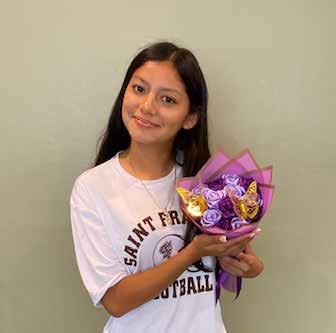
“The community at Saint Francis is really strong. Every little group that you’re a part of is a small family. ”
When and how did you create your business? I took Entrepreneurship class as a junior. Our assignment was to create our own small business, individually or with a group. I wanted to keep whatever money I made, so I worked alone. I scrolled through TikTok for business ideas and saw lots of bouquets of real and fake flowers. I found a video on making roses out of ribbon. I’m not much of an arts and crafts person, so this was new to me. It was definitely trial and error. I started by asking friends if they would buy bracelets or ribbon bouquets. They said bouquets because there are a lot of high school couples. From there it was about figuring it out.
What business challenges did you have to solve? My mother and brother helped me make roses in the beginning, because once people learned of this, I got a bunch of orders for Christmas. It’s very timeconsuming. Six roses take me an hour to make. I learned that the price you set will reach the target people that you want. Every business has a target person. I targeted couples.
What have you learned about business and your ability to embrace challenges? I learned I like the marketing aspect. Now, I see a logo and think about what I learned in class on what makes a good logo. I apply the marketing aspects I’ve learned into my leadership roles. Creating and carrying through with a business has taught me how social I am. I didn’t have other people in my business,
so I was doing all the finance, inventory, pricing and marketing. You need to get out of your comfort zone. I realized that I have good communication and customer relations skills.
The biggest lesson is that it’s very necessary to go through all the baby steps to build the best version of something that you want. Saint Francis was new for me. Entrepreneurship class was new. You have to go for it, because you never know what new things could happen from that.
How has Saint Francis helped you in business and other areas? The school’s programs have helped me meet a lot of new people and have given me opportunities and resources that I’m super grateful for. As a junior, I branched out with activities, and a whole new world started for me with more connections. The community at Saint Francis is really strong. Every little group that you’re a part of is a small family.
I plan to study kinesiology at a West Coast college and be an athletic trainer, but I do plan to continue my business since it’s a great way to make money. I’ve been selling steadily since last December, filled about 50 orders so far and made more than $3,000. I’ve sold to family and other schools through my Instagram account and wordof-mouth (@bouquets.byemi). Last spring for Junior Prom, I made ribbon corsages.

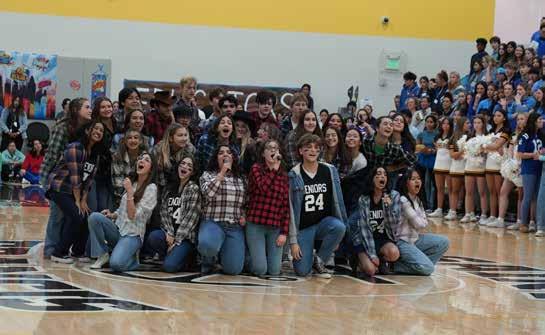
It seems like an impossible task: create a Spirit Week focused on Holy Cross historical figures that is fun and educational. That’s exactly what Associated Student Body (ASB) members and their leader, Grace Savinovich, associate activities director, accomplished. The “Heroes of Holy Cross” week was a joyful celebration that allowed students and educators to see Holy Cross values in action.
The group created relevance and authenticity by tying history to current campus experiences and offering yet another way to foster belonging. Fr. Edward Sorin, C.S.C., was a groundbreaker; he founded the University of Notre Dame and St. Edward’s University, two Holy Cross educational institutions. Students connected him to how Saint Francis broke ground last school year with the construction of the Welcome Center. Activities that day included honoring construction crews and the Facilities Department.


“This history is not something that simply came before us and is old and dusty, but it is very much lived in, and it is ours,” Ms. Savinovich says. A few other highlights from Spirit Week:
• The activity to honor Sr. Mary of the Seven Dolors, known for taking care of Blessed Basil Moreau and for holding staunch beliefs? Students were asked to share their hot take to receive a hot cake. (If you had an opinion written on your shirt, you could get in the pancake line.)
• To bring Fr. Patrick Peyton, C.S.C., known for popularizing the phrase, “The family that prays together stays together,” into the 21st century? Students played “Family Feud” and dressed up with their group for awkward family portraits.
• The program celebrated Blessed Basil Moreau, founder of the Congregation of Holy Cross, with educators dressing like students and vice versa, followed by an educators vs. students dodgeball game.



Kyle Velasco ’25 qualified for the state meet in the 300-meter hurdles.
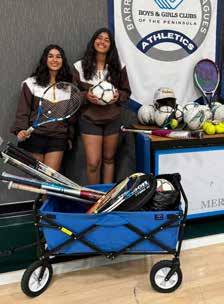


Charlotte Kohler ’24 was named the 2023-24 Gatorade California Girls Soccer Player of the Year for the second straight year. She plays at Stanford University this fall.
Thanks to friends Arya Jamkhandi ’26, a soccer player, and Aanya Singh ’26, a tennis player, under-resourced youths in the Bay Area now have access to more sports equipment.
Last spring, these veteran volunteers — Aanya is in the Lancer Ambassadors leadership group that creates experiences of welcome for students, families and visitors, and both served on Freshman Student Council — rallied Saint Francis students, coaches and teams to donate gear and equipment. They received nearly 90 golf clubs, baseball bats, tennis racquets and other sports gear that they

Kate Munnerlyn ’24 was similarly named the 2023-24 Gatorade California Softball Player of the Year. She is continuing to compete at Texas A&M University.
donated to the Boys and Girls Clubs of the Peninsula, an effort that received attention from local media.
Their successful drive has given them confidence to try new things, including a second, expanded drive with a sports gear donation box set up at Sports Basement in Sunnyvale, available through October. To go global, they researched partners and have teamed up with Honduras Child Alliance. “They fit our mission and champion the cause of empowering and supporting girls,” says Arya.

“One of my Saint Francis highlights is the immersion project to Brazil. Nine of us and three teachers went for eight days. We worked at different schools, doing activities and games with the children. Eduarda Machado ’25 and I translated everything into Portuguese. Our group got really close. The last few hours of the trip, we went to the market to find something that would remind us of our trip. We found these bland-looking bracelets. They’re perfect. We all have them and get together as a group.”
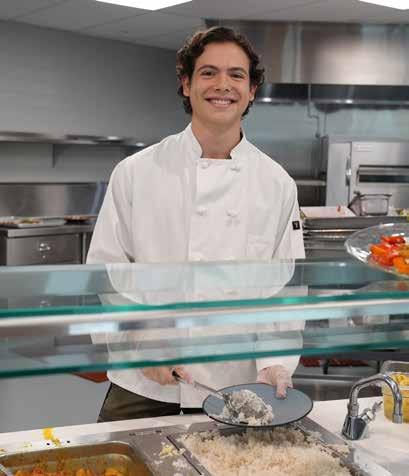

“Most people will walk by a pencil lying on the floor, but I think, ‘Free pencil!’ I pick them up, so whenever someone needs a pencil, I have one to give. I’ve never had to purchase pencils. I don’t look for them, but I have a sense for finding them. I pick up pencils with different sizes and sometimes a little beat-up, but never mechanical pencils, pens or Sharpies.”

“I am the audio mixer for my church, Bethel Church of San Jose. Every Thursday night, I go to learn how to switch the cameras and do the lights and other technical components. I’m excited to go to the next level with my skills.”
Lopes de Avila ’25, hospitality intern in our new Welcome Center, nurtures community whether clearing plates or serving at school events. He and 12 other interns also helped to select the dinnerware and furniture for the new building and dining hall. A nationally ranked swimmer, he moved on from swimming last year to focus on other activities. “I miss it, but when I look at what I’ve gained in return, I don’t regret it,” he says. “I just love connecting with people. When I was in ninth grade, my first impression of Saint Francis was the juniors and seniors being so welcoming. That made me comfortable to reach out to other people that I don’t know.”

“I’m the moderator for Lusófono, the club for people from any Portuguese-speaking country. One of my favorite discussions is about our favorite snacks. Mine is Paõ de Queijo or cheese bread. My Brazilian jersey is always part of my workout clothes in my backpack.”
“Last year Ms. Ruebusch in Campus Ministry would ask for my input on how students are spiritually. Are we getting a chance to experience God? To go to the Chapel? I told her to use me whenever she needed to. This year, she encouraged me to attend a Senior Retreat to learn how to lead other retreats.”

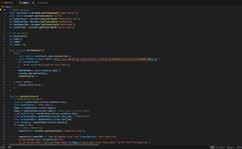
“After school, I go to the library to do homework and to program. When I first learned about coding when I was 12, it was mindblowing. Whatever I can think of, if I know how to speak the language, I can make it into a reality. I started taking it seriously sophomore year. I code with Python, Java, JavaScript, HTML and CSS. I plan to study computer science in college.”
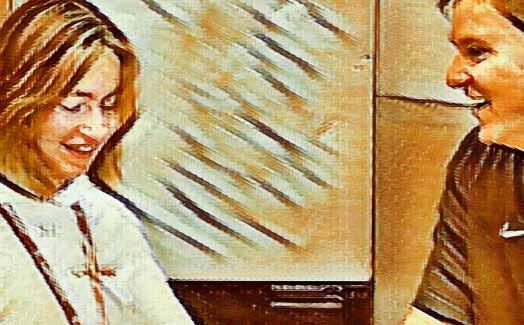
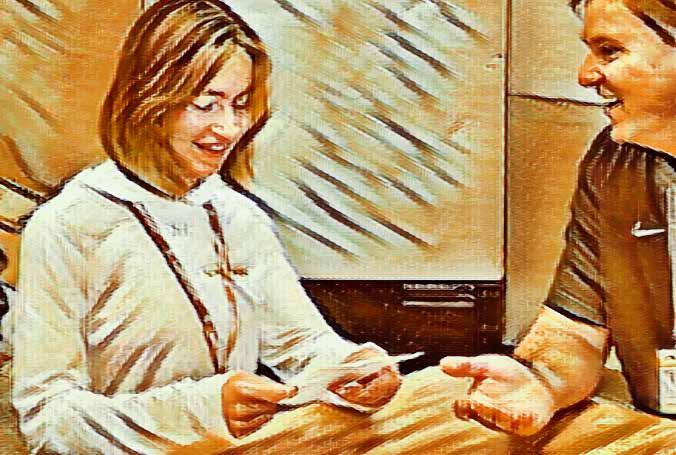

Since the debut of ChatGPT two years ago, Tanisha Umbarkar ’26 has had a steady study companion: AI.
This artificial intelligence tool has become an integral part of her study routine. If Tanisha is struggling with a math concept, she asks ChatGPT to provide a step-by-step explanation. When preparing for a test, instead of relying on her notes alone, she asks ChatGPT to generate multiple-choice and free-response questions as a warmup for the real test.
“AI can create personalized learning plans and make learning more engaging,” Tanisha says.
While a novel tool in November 2022 when ChatGPT debuted — and, yes, it can write a novel if you ask it to — AI is seemingly everywhere now. AI will create a bespoke travel itinerary. Type in your fridge’s collection of leftovers and wilting vegetables, and AI spits back menu suggestions. Gemini (Google’s AI tool) now offers a helpful AI summary before listing standard search results.
“ HOW WE EDUCATE THE MIND WILL CHANGE WITH THE TIMES; HOW WE CULTIVATE THE HEART IS AND WILL REMAIN TIMELESS.” BLESSED BASIL MOREAU
Once the stuff of sci-fi books and films, AI’s potential is endless. In addition to helping students like Tanisha deepen their understanding of a topic, AI is helping humans solve complex problems like improving cancer screenings and creating empathetic robots to assist people with autism or those with dementia. (See profile on page 18.)
The benefits are not as clear-cut in the field of education. Administrators and faculty at schools and universities around the country are wrestling with how to integrate AI in curricula and classes and how to handle academic integrity issues. It’s a complicated lift. Currently, California, Oregon and North Carolina are among the few schools that offer guidelines to public school districts on standards for using AI as a teaching tool.
Tanisha understands why her teachers may be cautious about encouraging students to use it. Ask AI “what are the rhetorical devices used by Shakespeare in King Lear?” and in the time it takes to read these last few paragraphs, AI will have scoured the entire internet, used complex mathematics to connect different digital breadcrumbs of publicly available information on the prompt and spit back an answer.
While there are emerging tools like Turnitin and GPTZero that educators can use to check whether a student uses the AI answer in a paper, these tools are not infallible. And checking for AIinspired plagiarism adds significantly to a teacher’s already heavy workload.
“This is a challenge in any school setting right now, especially for essays or longer written assignments,” explains Lesley Shortal ’98, instructional coach at Saint Francis. “We can tell students that they’re not allowed to use AI, but they can still choose to use it. AI detectors can also err. Teachers need to know if something doesn’t sound like their students’ writing. When that happens, we engage our Dean’s Office for a conversation that moves forward uniquely as in each case.” So far, there have been a few such conversations at Saint Francis.
Last year, Saint Francis added explicit language that student use of AI on assignments requires teacher permission. This remains the policy. “In contrast with New York City Public Schools, we never banned AI but left it to individual teachers to set the rules for their classroom,” adds Ms. Shortal, who was the school’s educational technologist before her current role. As such, she took part in ed tech conversations with Bay Area independent schools about AI following ChatGPT’s release.
She and fellow instructional coach Rachel Sabol are helping their colleagues go boldly (or at least, well-informed) into this new frontier. In early 2023, Ms. Shortal led the school’s first AI educator information session. Last June, they ran a two-day AI workshop for educators to explore a variety of tools and to discuss the ethics of AI. “We don’t have all the
answers, but this summer’s workshop was an opportunity for people to explore AI in different dimensions and also to start thinking about the ethics of it,” Ms. Shortal adds.
The pair also spent the summer drafting policy and guidelines, one set for educators and one set for students. This fall, before Saint Francis rolls out a new AI policy, Ms. Shortal and Ms. Sabol are gathering feedback from faculty and students to ensure dialogue and buy-in on matters of academic integrity and AI use.
“One of the things that we’re thinking about is explicitly naming the level of use that’s acceptable on an assignment, such as using AI to generate ideas vs. writing the whole paper,” Ms. Shortal explains. “If issues do come up, we have a baseline understanding as a community of what it means to use AI in a way that is ethical.”
A June 2024 survey asking Saint Francis educators about student AI use was part of the school’s deep dive for information. Results ran the gamut from being unfamiliar with AI to students who are building their own chatbots. AI proponent Tanisha hopes her teachers will integrate AI more. “I would like to use it and see it being used to maximize the efficiency of student learning.
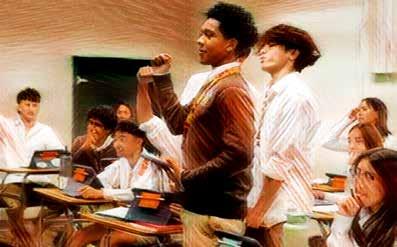
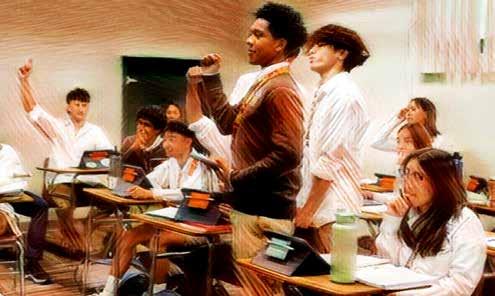
Maybe in five years, AI will start to get more widely accepted in the field of education,” she says.
Saint Francis hopes to shorten that time frame. “The possibility of AI is really exciting,” Ms. Sabol says. “Our educators come from a place of care, passion and excitement, not only about their subject matter, but also about the students that are in front of them. They have awesome ideas, but maybe not the capacity to be able to implement all of them all the time. AI tools may be able to do some of those things that they’ve dreamed about but haven’t had either the skills or time to do on their own. It opens up a lot of doors for these ideas to become reality in our classes.”
Here’s a sampling of how Saint Francis teachers are using AI this fall.
n Karla Andrade, Spanish class, generates AI images for students to describe for vocabulary practice, based on specific terms.
n Baron Cannon, Entrepreneurship class, built a chatbot, trained in his course materials, for students to interact with in real-world business scenarios.
n Sean Gross, Spanish and Religious Studies teacher, used AI to generate icebreakers and games/activity ideas.
n Theresa Orozco, AP Spanish Language, edits emails with AI and generates examples of literary devices.
n Laura Rose, Drama class, uses AI to generate short scene scripts.
Like Saint Francis students, the school’s educators vary widely in their AI knowledge. “I think that AI use is still pretty limited among teachers, especially in terms of getting students to use AI in a robust way,” Ms. Shortal says. But they are excited about AI’s potential to give them more time to interact one-on-one with students — the hallmark of Saint Francis. “Here, we talk about connection and family so much, so efficiencies leading to more human interaction is huge,” says Ms. Shortal, who teaches AP World History.
For her STEM classes, Ms. Sabol uses AI to generate answers for study guides and keys, which she then checks for quality and accuracy: “It’s much faster

for me to check it than it would be to write all those answers on my own,” she says. “It frees up my time to sit with students and give them my personal feedback on their responses.”
Teachers across the disciplines are beginning to use the technology. AP Environmental Science teachers are interested in using AI to help students get higher quality feedback on their work. Spanish teacher Karla Andrade uses DALL-E to create custom images that allow students to use vocabulary banks to talk about the image.
Then there are the Saint Francis early adaptors. Baron Cannon has embraced AI for his Entrepreneurship class, and along with Addison Raak ’17, robotics teacher, led a professional development session at Saint Francis on AI use. (For more on Mr. Raak, see Holy Cross Educator on page 30.)
Mr. Cannon created an AI chatbot (he calls it a co-pilot) for his Entrepreneurship class. If his students have questions on a concept — what are KPIs? — and he isn’t available to answer them, his co-pilot will answer just like Mr. Cannon. To create the co-pilot, he wrote an algorithm with his course content. The co-pilot answers students’ questions, trained in Mr. Cannon’s syllabus.
AI is helping his Entrepreneurship students become more innovative, he says. “I’m trying to make my class as authentic and interactive as possible. I can use AI to personalize their learning and experience and adapt to a student’s pace or their interests. AI is a lever, a tool like any other that is really going to accelerate their progress and learning, which is where entrepreneurship falls.”
By using AI to develop their businesses, students get real-world, hands-on experience with technologies that are increasingly used in the business world, Mr. Cannon says. They use the co-pilot to role-play conversations with a customer or business owner. Two students used the co-pilot to learn more about their



Each year, the Saint Francis marketing and communications team works with AP Art class to produce a piece of student art to serve as the centerpiece of our school Christmas card. Last year we chose a digital adaptation of a Marcello Corti original, produced by Olivia Perez ’24, as the focal point.
Olivia’s art places images of students celebrating traditions and making memories within the garments of the Holy Family. Inspired by the snapshot elements of Olivia’s work, the marketing and communications team brought this world to life through a video installation as an expression of students and the faith and innovation at the core of Saint Francis.
The world of the centerpiece was expanded by incorporating AI-generated backgrounds of shepherds and the three wise men, along with digitally manipulated photographs to produce the painted look and feel of the original art. Once the full image of the Holy Family surrounded by the additional characters was created, these images were projected onto screens in the Innovation Theater and animated with After Effects for an immersive viewing experience. A soundscape, created with Cakewalk by splicing sound effects of a desert night, livestock and a baby, completed the experience for the Lancer community and produced a tender moment in the life of the Holy Family.
house maintenance business, such as house painting standard operating procedures or identifying costs and revenue particular to the industry. “As the students have more questions about the business, the co-pilot helps them better frame the questions for better answers,” Mr. Cannon says.
Can’t his students just type their questions in a search engine? Ask Mr. Cannon and he says what his co-pilot does vs. Googling is personalize the conversation, using the answers found in his syllabus, tailored to high school students. “The co-pilot is no different than having a conversation with me,” he explains. “As a teacher, I am going to adapt how I talk about these new skills or these business concepts for my students. The co-pilot doesn’t replace me as an educator but helps me make a more personalized learning experience more scalable.”
Mr. Cannon sees AI in the same light as a calculator: a tool to process information and bounce ideas off of, not replace human interaction. This is particularly true in guiding Lancer entrepreneurs. “The students who are using AI are not the ones who are making the most amount of revenue,” he says. “Those making the most amount of money are still the ones who have the grit to find a need and listen closely to human customers.”
Mr. Cannon won’t use AI for his World History class, though, and believes it gets in the way of examining the world from a human perspective and developing critical historiographic, writing and reading skills. “When I ask my students to do an analysis of reading the words of a person who experienced the Industrial Revolution — how their child was dying of tuberculosis or how

rotten and infested their home was — I don’t want AI to read and summarize that. I want students to reflect on the fact that the person had the same fears and concerns that they do, to recognize what it’s like to be human and to strive for something greater.”
He believes that Saint Francis’ careful, thoughtful approach toward AI utilization at the school is the right one. “We should adopt whatever is going to produce the best outcomes for the students in the specific context in which those teachers are operating,” Mr. Cannon adds. “AI tools are not going to be relevant in every classroom.”
Like several of his colleagues who are using AI to help with the business of teaching, he is hopeful that these work efficiencies through AI will be widespread at Saint Francis. “If they

Tanisha Umbarkar ’26 has some tips on writing better AI prompts for better results:
1. Have one goal that you want to accomplish. For example, write an email with specific points.
2. Start with what you want with broad language. The first response may not be what you’re looking for so refine your request with more precise language.
3. Always use clear and concise language.
4. Personalize responses by changing the parameters, such as adjusting the tone of the email to be more casual or formal.
aren’t using it for the enhancement of the learning of their students, they are trying to enhance the teaching experience, to be more efficient with the paperwork that gets in the way of our doing the very human work of education,” adds Mr. Cannon. “While no one ever said that they wanted to get into education because they enjoy hours of grading, it’s important to remember that AI tools can be used to streamline tasks and not replace the essential role teachers play, including reviewing and providing thoughtful feedback on student work.”
This past summer, while Saint Francis educators were experimenting with AI as a teaching and learning tool, the school was using it to assist community partners to refine their AI process to better serve their customers. Educators and students teamed up with The Navigator Collective, a company that uses AI to help organizations to address complex business challenges with creative ideas by using a process called divergent ideation.
Paul Sears, founder and CEO of The Navigator Collective, had worked with Saint Francis with a previous company during the recent school rebranding process. During that project, he was struck by the school’s Holy Cross charism of welcome and hospitality. As he started his new venture, he returned
to Saint Francis to seek feedback on his ideas and organized a brainstorming session to allow his team to practice.
“Being on the campus of Saint Francis was a reminder to carry the charism to the rest of my work and think about how innovation could be very generous and welcoming,” says Mr. Sears.
For this project, The Navigator Collective, which works with schools and universities, helped Saint Francis brainstorm on how to tell the story of the school’s charism as it is experienced by alumni, prospective families, current families, educators or anyone else who steps on to campus. Saint Francis’ participation helped Mr. Sears’ team improve its skills, such as anticipating what questions clients ask and being prepared if the AI tools malfunction. Mr. Sears looks forward to future collaborations with Saint Francis, including an upcoming workshop with educators in October.
For students today and the coming generations, it’s not a question of whether AI will be part of their daily work life. It will be.
Consider how many times you use a search engine, personally or professionally. In August 1996, when Google Search was launched by Stanford PhD students on a university private
network, it was the new technology that replaced “Ask Jeeves,” a search engine that used natural-language queries. Google was better at web-crawling and today handles about 6.3 million searches a minute (according to Google AI).
Now imagine being told that you couldn’t use Google or any search engine in your work. Teaching students to be informed users of AI is essential to their success now and in college and careers. Though in its early stages, it’s a tool that is being used across all industries, and it will only improve.
Innovation and embracing every part of it, promise and risk, is at the heart of Holy Cross education. Saint Francis was an early adopter in establishing school email accounts in 1995 and in providing iPads to students in 2012. “We are mission-bound to help our students understand and become critical users of AI,” says Katie Teekell ’00, principal of Saint Francis. “When the Brothers of Holy Cross founded Saint Francis in 1955, they saw infinite possibilities for what Catholic education and community could be. As Holy Cross educators, it is our calling to embrace new ideas and innovations with confidence and hope to better prepare our students to lead and serve in this world.”
Lancers are leading the artificial intelligence frontier across different industries. We talked to a few about how they use AI and what they see as its promises and shortcomings.

Creative Director, KEEN Footwear

Zeeshan
Khan ’17
Founder and CEO, Zoetic Motion
Co-Founder, Color Coded, nonprofit promoting career and academic success of historically underrepresented minorities in tech
BS, Computer Science, Minor in Entrepreneurship; MS in Computer Science, focusing on Artificial Intelligence and Computer Vision technology, both degrees from California Polytechnic State University-San Luis Obispo
Zoetic Motion uses AI to assist people who need it like with physical therapy exercises, which require patient consistency. Our intelligent coaching system mimics a physical therapist with a gamified portal of exercises to connect in-clinic progress with out-of-clinic accountability. We track a patient’s body pose with their phone or computer camera for feedback. Patients get the support and accountability they need for recovery, and therapists get real-time engagement data.
AI is a useful tool in the massive toolbox for creative people. About a year ago, our designers started using AI to assist with workflow. You could get 30 new [shoe design] ideas immediately, but unless you’re really good at prompts, you can lose control of the process. When people rely on it as the main tool, it’s very narrow. AI will generate things that are flat-out impossible to make or so out-of-the-world that’s going to cost us and the consumer a phenomenal amount of money.
I am generally weary of technology. I grew up in shoe factories. After I graduated from Saint Francis, my father co-founded KEEN and I became a trainee to learn the business, mainly production. I spent my 20s in factories all over Southeast Asia. I work in research and development and have seen a lot of tech that promised to change shoe production like 3D printing of custom software.
We created our own AI platform for the rapid generation of visual representation of shoes. Our designers had been using AI to iterate ideas, but it hadn’t generated a design we could use. Our new platform is firewalled and runs all the different AI models. Our team, which includes a social psychologist, engineers, designers, developers and an insight specialist who does real-world testing, spent months building data sets and
digital agents. If you set up AI properly and engage it in the right way, it’s mind-blowing how quickly it will learn.
Speed is crucial, because it takes us a long time to make a shoe. Our first time using our AI platform, we went from a blank page to four different design ideas, production plans and marketing briefs in four hours. Normally that takes six months. We are just learning from our platform and can’t launch these shoes tomorrow, but they are solid projects.
It’s amazing how intelligent AI is when we give it the right information. There are concepts and patents I’ve invented with one other person. Only two of us really know this stuff, and now AI knows it, too, maybe not quite as well but pretty close. I work with blueprints and 3D files, and there’s a gap in AI’s ability in image generation and assessing a 2D technical drawing. Large language models are not great at math.
I have a specific set of skills and problem solving I’ve learned from years in factories and through life. I picked a lot of critical thinking skills from my Saint Francis teachers and my good classes and good friends. I’ve worked a lot with scientists and biomechanics over the years. Now with our AI platform, I have this knowledge at my fingertips.
For me innovation is an opportunity for the creator and end user. A lot of people define it as something new or different. At KEEN, it’s an opportunity for us to expand a market or our business. For our customers, it’s an opportunity to have a better life. We make outdoor shoes to explore the world. AI is helping us open up opportunities. That’s what real innovation does.
I designed an AI algorithm that assesses the correctness and identifies potential risks for patients performing common physical therapy exercises. It’s based on open-sourced technology that allows us to read from everyday devices, like a phone or tablet, without any additional sensors. Now, we’re building on that, with a fine-tuned, proprietary measurement layer that infers a digital 3D representation of the body for in-depth analysis.
AI has a lot more work to be done for it to be fully applicable in our lives; it functions best as an assistive tool, where it has fewer errors, but it has the clear potential to eventually handle tasks more comprehensively. It works in a mathematical pattern-based way, which takes away a level of human emotion. During my master’s work, I asked AI to consider two hospital patients in need of the last dose of amoxicillin penicillin. AI determined that the older patient had less value to give to the world vs. the younger patient. It won’t consider emotions or the possibility of finding another dose from another hospital.
AI’s biggest advantage is in health care or any field that requires extreme documentation and consistency. When you can give someone a tool that replicates a therapy session, you provide an opportunity to continue their learning, support and treatment. An AI coach could guide a stroke victim in practicing
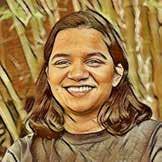
Current PhD Student, Carnegie Mellon University, School of Computer Science
Recent research intern, Robust. AI, early-stage startup building collaborative mobile robots that work with and alongside humans in warehouses, manufacturing and other settings
BS Computer Science, BA Cognitive Science, BA Linguistics, University of Southern California
Robots currently struggle to interpret the nuances of human communication. Human communication is multimodal, with an interplay of facial expressions, gestures and vocal cues that influence the meaning being created and perceived during interactions. Over thousands of years of evolution, humans have developed social intelligence, which we use daily. Machines currently lack this level of intelligence. My research advances computational foundations for multimodal social intelligence, to enable robots to better understand and respond to nuances in human communication, behavior and emotion.
Making AI more socially intelligent has been understudied. Current AI systems have shown great promise in mathematical reasoning, code generation and other tasks that are not explicitly grounded in social interactions. For example, these models currently do not perform well on the type of social reasoning required to analyze
basic skills, provide 24/7 support and give feedback to staff. With the nursing shortage, there are not enough people to monitor if patients are doing their exercises. I’m talking with [Bay Area] hospitals about an iPad on wheels that goes from patient to patient to walk them through exercises during inpatient care.
Before college and through my sophomore year, I was a student innovator for the Google Cloud platform. We promoted the Google Cloud platform on university campuses. This was my first introduction to how technology has specific applications. In college I studied cybersecurity, but by senior year, AI was popping up. I got excited by the idea of mimicking the brain with the computer. With cybersecurity, it’s great helping people keep their money and data private, but at the end of the day, I want to help people smile [because] AI helped them get through something important.
At the onset of COVID-19, there was a strong push to find representative datasets, particularly for distributing new vaccines and in medical research considerations. Alongside professors and peers at Cal Poly, we began introducing research from “Data for Black Lives,” focusing on unequal representation in public datasets. This effort promoted new research projects that aimed to ensure diversity and representation across campus.
metaphorical language. To build a future with robots that assist humans in homes, hospitals and other spaces, it will be important for these machines to have social intelligence.
I recently interned at a startup that is pioneering collaborative mobile robots in warehouses. Robust.AI is an early-stage startup that builds robots that work with and alongside people in warehouses to enhance their productivity and well-being. During my summer research internship, I worked on perception (helping robots understand the world around them) and interaction (helping robots interact more seamlessly with humans).
Socially intelligent AI systems can improve human well-being. There is great potential to augment (not replace) human capabilities with robots. For example, in college, I worked on research to develop socially assistive robotic tutors for children with autism spectrum disorder. We found that children who typically avoided eye contact with humans would interact more willingly with the robots we placed in their homes. Over a month of these interactions, we found that children developed stronger social skills and began to engage more with the people around them.
It will require community effort to build and deploy AI systems that safely add value to people’s lives. For example, in a future scenario with companion robots helping the elderly, we will need to watch out for unintended consequences, such as increasing their isolation and emotional dependence on robots. In addition, there are ethical concerns related to collecting and using personal data to train these robots. There is a considerable gap between the science of building social intelligence in AI and responsibly deploying robots that add value to human lives. I am motivated to help bridge that gap and see socially intelligent machines broadly deployed to assist humans during my lifetime.
IN 2023, THE OPENING OF THE EGGERS INNOVATION CENTER IGNITED NEW IDEAS AND EDUCATIONAL EXCELLENCE. OUR NEW WELCOME CENTER GIVES STUDENTS, EDUCATORS AND OUR LANCER COMMUNITY INCREDIBLE NEW FLEXIBLE SPACES TO GATHER AND ENGAGE IN HOLY CROSS FELLOWSHIP AND HOSPITALITY.
Did you know that students designed the Dining Commons to be the hub of Saint Francis? They chose the layout, furniture and even the silverware! Students have comfortable spots for clubs and activities to meet over multiple healthy options for snacks and lunch.
We are bringing Silicon Valley into Holy Cross. Nonprofit organizations, corporations, universities and other industries are already working with students in the Eggers Innovation Center on meaningful projects to give them experiential learning opportunities rooted in goals of social impact.
Saint Francis educators are passionate professionals. Now they have flexible spaces to collaborate on common goals, envision new and exciting opportunities and share meals and fellowship in The Brothers of Holy Cross Educators Dining Room. Focused spaces give educators a place to contemplate spiritual and intellectual aspects of our school’s mission while energy exudes from lively discussions and storytelling in collaborative spaces.
Saint Francis hosted a community celebration of the opening in conjunction with Grand Reunion weekend Sept. 6-8. If you missed the opportunity to immerse yourself in our transformed campus, please come for a visit! We’d be happy to take you on a tour of our new spaces. If interested, please email Carolina Scipioni, stewardship director, at carolinascipioni@sfhs.com




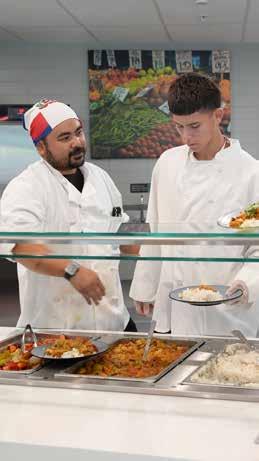


In our newly enclosed Quad, a pathway of engraved bricks connects our Lancer community with the Holy Family.
Concluding in 2025
At Saint Francis High School, we are deeply grateful for the more than 800 Lancers, families and friends who have generously supported Light the Way: BRIC by Brick. Your spirit of giving has provided our students and educators with the modern facilities and resources they need to grow into compassionate, impactful leaders within our community. Thank you!
While the Eggers Innovation Center and Welcome Center have opened their doors, we still need the support of our Saint Francis community to help these new spaces flourish. Every gift, no matter the size, contributes to transforming these buildings into places that nurture spiritual, intellectual and social growth. Together, we carry the legacy of Saint Francis into the future.
We warmly invite you to visit our newly completed Quad and walking pathway, where the generosity of our community is celebrated through engraved bricks. As we prepare for the second installation next summer, this is a special opportunity to leave a lasting mark.
With a donation or pledge of $1,000 or more, you can inscribe a brick in honor of your family, loved ones or in memory of a cherished individual or group (for example, the Class of 1984). Your gift not only honors your connection to Saint Francis but also helps build a future filled with promise for generations to come.

Scan the QR code to give, pledge and learn more today. sfhs.com/givinglight.


Invited to Mountain View by the Archdiocese of San Francisco, the Brothers of Holy Cross looked out over a shaded, six-acre orchard and had a vision. When the Brothers opened the doors of Saint Francis High School on Sept. 12, 1955, they introduced the Holy Cross philosophy of educating the whole person to the Santa Clara Valley. As we approach our 70th anniversary with a transformed campus, we appreciate that our community has remained constant.

“When you look around campus and see the changes, one thing that hasn’t changed is the quality of education; the empathy, the sense of community when you visit. The spirituality that’s here [on campus]. It’s a very special place.”
– Br. Michael Winslow, C.S.C.

Instagram: @saintfrancisalumni
Facebook: Saint Francis High School (Mountain View) Alumni
X: @SFHSalumni
LinkedIn: Saint Francis High School Alumni
SFHS.com/alumni
WEhope this message brings fond memories of your time at Saint Francis. As your alumni department, it’s our pleasure to keep you connected to the wonderful happenings on our campus. In this issue of Progress, we’re exploring how we’re embracing technology and new ideas, a theme that resonates deeply with our school’s legacy.
We are thrilled to welcome Bill Beasley ’82 back to campus as our new innovation director. Bill’s visionary spirit makes him the perfect addition to Saint Francis. His return symbolizes our dedication to evolving and enriching the educational experience at Saint Francis, and we can’t wait to see how he’ll inspire our alumni and their companies to be involved with our students.


Opening the new Welcome Center was made possible through financial contributions from our Lancer community. To date, alumni have donated $8,275,000 to Light the Way and your gifts are already transforming our campus as a catalyst for new ways of teaching, learning and collaborating.
OUR ALUMNI SPEAK ABOUT WHAT SAINT FRANCIS MEANS TO THEM AND HOW THEY GIVE BACK TO CURRENT AND FUTURE LANCERS. SCAN THE QR CODE AND TAKE A LOOK!

Speaking of innovation, we are proud of Addison Raak ’17 and the incredible work he is doing with our robotics students. Under his leadership, Lancers are learning cutting-edge technology and gaining invaluable problemsolving skills that will serve them well into the future. Addison’s enthusiasm and expertise are sparking a new wave of interest in our robotics program, and the achievements of the team are a testament to the power of embracing new ideas.
Recently, we celebrated the Grand Reunion, and it was wonderful to see so many familiar faces back on campus. The joy of reconnecting, sharing stories and seeing our alumni react to our exciting changes on campus — especially our new Welcome Center — was heartwarming. The Welcome Center stands as a beautiful gateway between our rich past and our innovative future, reminding us of the enduring bond we share as a community.
We are especially blessed that your fellow alumna and Light the Way donor Sheri Sobrato ’80 has matched $775,000 in gifts from alumni and their families. As we begin the season of gratitude, Sheri just extended her offer to double your gift to Light the Way through 2025! Donate today, and your generosity will have twice the impact.
Thank you for being a vital part of our Saint Francis and Holy Cross family. Together, we are embracing new ideas and creating a legacy for current and future generations.
Go Lancers!

Greg Calcagno ’83 Alumni Director gregcalcagno@sfhs.com

Kate Lincoln ’16 Alumni Giving Manager katelincoln@sfhs.com
Thomas Frank ’60 is a retired faculty member and director from Providence College in Rhode Island.
Michael ‘65 and Eileen Lucas recently celebrated their 50th wedding anniversary. Michael works for Hertz Rent-A-Car in the maintenance department at Burbank-Hollywood Airport. Eileen is a teacher at Sierra Madre Community Nursery School. They live in Arcadia, Calif.
Michael Maloof ’74 released his first novel Relentless, which won a “best debut novel” award. He reports that the book has done well internationally, especially in Australia, Canada and the U.K.
Stay Connected, Lancers! Visit sfhs.com/alumniconnect to:
• Update your contact info to learn about SFHS alumni activities and opportunities
• Submit Class Notes and share your latest news
Tim Brown ’80 has retired from a 40-year career in compensation management and consulting.
Leaving as a partner after nearly 26 years at Aon, Tim managed Radford compensation and practices surveys.
JJ Anderson Elliott ’91 has written her first novel There Are No Rules For This. She states that she was compelled to write this book because she finds herself frustrated by the way suicide is treated in print and on-screen, as a mystery to be solved rather than a multi-layered, complex mental health situation that can rarely be boiled down to one specific “reason.”
Trisha Lee ’93 received her EdD in Social Justice from Santa Clara University in June 2024. With 24

years in public education, 11 as an elementary principal and four in Mountain View Whisman School District, she is the new principal at Steindorf K-8 STEAM Magnet in the Cambrian School District. She resides in Los Gatos with her son Cooper and husband Paul Boothby.
Elizabeth Gordon ’97 has written the book Play the Part: Manifest Your Dream Life (& Self!) With These 5 Acting Techniques. She has acted in theater, film, TV, web series and live events, and her work has been seen at film festivals all over the world. After leaving acting, Elizabeth delved into her lifelong love of spiritual studies and metaphysical mastery. She is now a writer and coach, helping people manifest more love, joy and abundance in their lives.

Saskia Gazenbeek Lagergren ‘97, a Los Altos native, has been named the new police chief of the Los Altos Police Department. She previously served as a Santa Clara Police captain of the Administrative Services and Investigations Divisions.
Liz Smith ’98, a TV producer and writer, was invited by the Amelia Earhart Hangar Museum to be on their panel, “Adventure Amelia: A Conversation With Explorers In The Search For Amelia” at the annual Amelia Earhart Festival in Atchison, Kan. The panel held a discussion about Amelia’s last flight and the search for her plane.
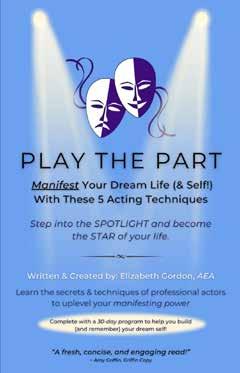
Mark Garner ’11 and Megan Zamiska ’11 were married on Sept. 23, 2023, at St. Ignatius Parish in San Francisco and held their reception at The Olympic Club Lakeside, with more than 40 alumni in attendance. Megan’s sisters Sarah, Alana ’22 and Lauren ’24 were bridesmaids, and Mark had his sisters Melinda Garner Kraft ’02 and Mary Catherine Garner Rullo ’07 in his groom’s party. Other guests included Mary Troedson Garner HC ’69, Shawn Troedson ’10, Maggie Troedson ’13, Molly Troedson ’06, Erin Troedson, Michael Olson ’08, Peter Olson ’10, Jamie Olson, Bryce Troedson ’09, Dom Steil ‘10, Jack Foster ‘10 and from the Class of 2011: Chris Billet, Lauren Blefari, Vinny Cannino, Rachel Duc, Ali Duvarus, Greg Guslani, Joey Kelly, Cory Kusich, Isaiah Lott, Ivan Margaretic, Wil Smith and Brandon Tom
Jodi Hinojosa ’14 is a naval flight officer of an E-2D Hawkeye on the USS Carl Vinson aircraft carrier. She married Marine Capt. Landon Nagao, a Huey pilot, on Sept. 16, 2023, at Los Altos Community Center.
Air Force Capt. Chad Lee ’15 was selected to the Elite Special Operations Surgical (SOST) Team this summer. His highly mobile team of surgical and emergency specialists are deployed to provide life-saving care on the battlefield, closing the gap between front line and conventional medical care. He will be deployed in hostile and austere environments where Saint Francis athletics have prepared him. Chad will support joint and allied special operations. He will be based in Las Vegas in 2025. This past summer, Chad married his University of Portland Nursing School classmate Taylor Frazier from Portland, Ore. Their ceremony was held at the Oregon Country Club.



Alumni, if you are the proud parent of a Little Lancer, please email LittleLancer@sfhs.com to receive a Lancer gift for your baby. Please include your address and the names of all family members.
June, daughter of Marko ’03 and Ashley Gera


Br. William Carl Smith, C.S.C., known as Br. Carl, served 50 years in ministry at many Holy Cross high schools around the country, including Saint Francis. He died July 26, 2024, in Austin, Texas. Before arriving at Saint Francis, Br. Carl served as a teacher and librarian. From 1984 to 1989, he served as the secretary and the administrative assistant in the Saint Francis Campus Ministry department. After this role, he went on to support with distinction two administrations at the headquarters of the South-West Province of the Brothers of Holy Cross in Austin. A man of grace, peace and wit, Br. Carl generously served others and was a faithful witness.
JoAnne Arnold, mother of Alumni Council member Juli Arnold ’88
Bo Aube ’75, brother of Debbie Aube Ribar ’72 HC
John Brazil, father of John ’84
Steve Burrell ’61
Patricia Cicchi, mother of Mike Cicchi ’87
Michael Dunne, father of Barbara Dunne ’78, Michael Jr. ’80, Mary Dunne Hedrick ’81, Joan Dunne Meulman ’82, Rich ’83 (Cristi Checklenis Dunne ’83), Steve ’86, Norman ’88, grandfather of

Jack, son of Austin and Ellen Belinsky Ward ’08
Jude Richard, son of James and Denise Minton LeeThorp ’04


Michael Dunne III ’16, Anne Meulman Bertron ’05, Elle Meulman Ruis ’07, Drew Meulman ’10, Kyle Dunne ’11, Kelsey Dunne ’13, Cole Dunne ’19, Justin Dunne ’15, Michaela Dunne ’16, Sydney Dunne ’21 Mary (Robin) Duggan, wife of Kevin ’68, mother of Andrew ’99 and Julie Duggan Pierron ’94
John Farnworth, father of Jenny Farnworth Forcier ’72 HC, Helene Farnworth Wood ’74, John Farnworth ’75, Anne Farnworth Freitas ’80, Julie Farnworth Levis ’81
James Hacker ’74, brother of Phil ’75 and Eric ’77, uncle of Alex Stankovic ’03 and Benjamin Hacker ’13
Terry Shewbridge Hewins ’68 HC, mother of Franklin Hewins ’00 and Jessica Hewins ’02
Anne Jensen ’69 HC, Alumni Council member and sister of Arnold ’65 (RIP) and John ’71
Verley Kirksey, grandmother of Julie Cornish Brand ’87, Allison Cornish Simmons ’94 and Jessica Cornish Schelegle ’97, great-grandmother of Matthew Brand ’08 and Alexa Brand ’14
Greg Loney ’77, husband of Joan (Weber) ’77, father of Eva ’08 (Joachim), Joseph and Daniel, brother of Dan ’79 (Mandee), Theresa Loney Casarez ’79 (Al), Vivian Loney Gallant ’81 (Allan), Bill Loney ’85, uncle of Rose Casarez ’11, Jack Casarez ’14 and Grace Casarez ’17, brother-in-law

of Bruce Weber ’61 (Bobbie), Craig Weber ’64 (Terry) and Ralph Weber ’67 (Zani)
Mark Martich ’74, brother of Nancy Martich Foster ’76
Robert “Bob” Masik ’66, senior class president and husband of Letitia Roddy Masik ’66 HC
Leo Ott, father of Ed ’81 (Michelle) Ott and Cathleen ’82, grandfather to Emily ’13, Jonathan ’16 and Sarah ’21
Catherine Quinn Perry ’93, sister of Tom Quinn Jr. ’80, John Quinn ’81, Megan Quinn Riccitiello ’82, Brian Quinn ’83 (Michele Rossi Quinn ’83), Eileen Quinn Tarantino ’85 (Frank Tarantino ’85), Dan ’87, Ann Quinn Halkett ’90, aunt of Alexa Quinn ’12, Sam Quinn ’14, Brendan Quinn ’18, Lauren Tarantino ’12, Julia Tarantino ’15, John Tarantino ’21, Liam Quinn ’20, Declan Quinn ’23
Jonathan Rutter ’09, son of Gillian and Gerrard Rutter
Steve Savage ’82, brother of Richard ’80 (RIP) and Matt ’93
Cathy and John Stahler, parents of Kim Stahler Zilliox ’86, David ’88 and Greg (RIP)
Spike Standifer III ’63, brother of Daniel ’65

$5+ million and more than 11% of the operating budget allocated to affordability
Saint Francis tuition among the lowest in the Bay Area
More than 23% of current Lancers receive some form of financial assistance
70% of the tuition assistance budget allocated to highneed students
Tuition assistance is 100% need-based
To address high cost of Bay Area living, Saint Francis offers smaller amounts of assistance for those who qualify
The tuition assistance budget is funded by the annual endowment distribution and annual fundraising activities
SAINT FRANCIS IS ONE OF A FEW CATHOLIC SCHOOLS IN THE BAY AREA WITH A FULL-TIME TUITION ASSISTANCE DIRECTOR. MARYANN O’LEARY SPEAKS ABOUT WHAT GIVES HER JOY IN HER ROLE.
1.What are the benefits of having a dedicated tuition assistance director?
This position allows for a more holistic approach to the tuition assistance program. Rather than a one-time quick response to an online application, I am a point of contact throughout the year as needs arise or personal family situations change, such as job loss. This includes need-based support for auxiliary programs such as immersions, retreats, activities and athletics, books, home internet, spirit wear, food service and even parent events.
2. What are you proud of in your role?
The connections I’ve made with students. Students visit my office and are excited to tell me about their recent test score, athletic achievements and other moments. There are times when they also relay their disappointments or just need an ear to listen, and I feel fortunate that I can be there for them.
3.Describe the relationships you form with students and families. Sometimes, I am the first person the family reaches out to when there is a job loss, medical issue or other sensitive situations. Students know that they can stop by my office for school supplies, clothing and at times, personal issues. I also stay in touch with some after they graduate.
I learn a great deal about a family through their application and meeting with them if I need additional information. It is extremely meaningful when I see what the tuition assistance funds mean to a family, when they realize their child will be able to attend Saint Francis.
4.How have requests for tuition assistance changed over the years? Tuition assistance was completely upended by COVID, which required a nimble response to the economic situation. New strategies were implemented, such as extending
payment plans or providing short-term assistance while families regained their financial footing. While families have for the most part recovered from the pandemic, tech layoffs have increased and applied new pressure. What used to be a once-a-year financial aid application process has extended to more of a yearround role as families are impacted in different ways.
5.What would you like people to know about tuition assistance? Tuition assistance at Saint Francis goes beyond the application; we help students to receive the full Lancer experience regardless of their finances. Donors should know their gifts truly make a difference for these students and their families. Students want to give back when they are able. I am repeatedly touched by the gratitude of the families.
Engage at Saint Francis by contacting Maryann at maryannoleary@sfhs.com
Our Poverello student yearbook photographers share their perspective on student life.
1 Cheerleaders, Rishabh Anand ’26
2 Sophomore spirit, Marina Kan ’25
3 Join the yearbook staff, Marina Kan ’25 4 Scoring, Luanna Vecchi ’27
5 A meeting of the Social Business Club, Marina Kan ’25 6 Rally tug of war, Marina Kan ’25


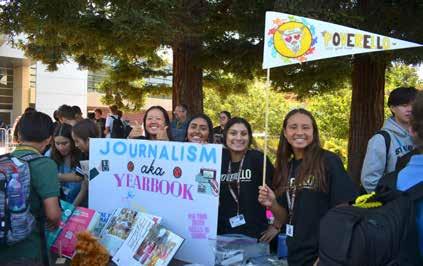


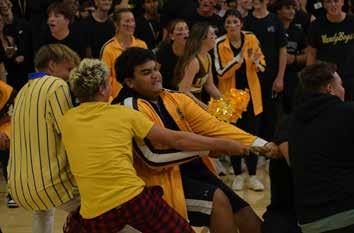


1990
Have you heard the story about the tiger that was the special guest at a Lancer rally or the time the Doobie Brothers performed for students during their early days? Totally true. Throughout our school history, students have found fun ways at rallies to express their pride in being Lancers, creating enduring memories.

1974


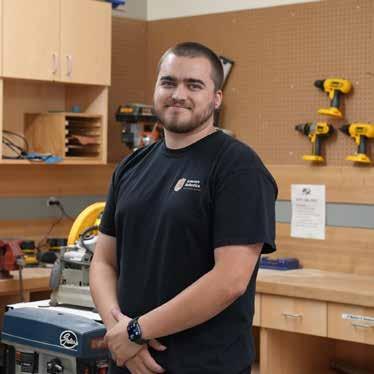
Addison Raak ’17, robotics teacher and moderator of the Robotics Club, builds the program to be accessible to all students.
HOW IS THE ROBOTICS SCENE AT SAINT FRANCIS DIFFERENT FROM WHEN YOU WERE A STUDENT?
I didn’t do robotics here because I didn’t have time. I played football, wrestled and ran track, so it was really difficult after school. Now I talk to coaches and tell them to promote robotics because this is something that their players can also do. We hold late Robotics Club practices from 5:30-7:30 p.m. I have a few football players who, right after football practice, do robotics for two hours and then go home.
WHY DID YOU WANT TO RETURN TO SAINT FRANCIS?
In college I tutored friends and worked as a TA and really enjoyed the teaching process. I wanted to find a teaching job in the field of engineering. This position is the best of all my worlds. Here, I get to be the person on the other side of these amazing relationships that I made with my coaches, my teachers — all the people who greatly affected who I am today.
WHAT DO YOU FIND SO COMPELLING ABOUT ENGINEERING?
I am stubborn and love solving problems. I can sit with a math equation or stare at a coding problem for 48 hours and actively enjoy the process of working on it. I love fixing things and making them work more efficiently, I love tinkering with my hands. I don’t think I’m necessarily smart. I’m just good at something that other people may struggle with.
HOW WILL ENGINEERING EDUCATION CHANGE IN FIVE YEARS?
There’s a rapid acceleration in engineering classes and engineering concepts. What people my age learned in high school, kids are learning in middle school, and topics covered in college are now studied in high school.
I envision multiple engineering classes where we can do a deeper dive into electrical, mechanical or civil engineering. I see more advanced robotics projects on campus, perhaps robots who take trash from students and sort recycling. In five years, my goal is that every student can experience our engineering program, robotics or the Innovation@Saint Francis program and understand this is something they can be successful in.
YOU HAVE DEEP EXPERIENCE WITH MACHINE LEARNING AND ARTIFICIAL INTELLIGENCE. HOW DO YOU INTEGRATE AI INTO YOUR WORK?
With the advent of large language models [LLMs] and chatbots, I use AI for almost everything in my life. I use it to streamline my day-to-day activities and in my teaching prep to help me create presentations, lesson plans and course curriculums faster than I would be able to traditionally. Mainly I use LLMs like personal assistants, leveraging them to get my work done more efficiently so I can devote more of my energy toward interacting with my students. I work with students one-on-one to mentor them though the engineering process, and that takes a lot of time and energy. I can only do that because I take advantage of AI.
Saint Francis High School
Saint Francis High School
Institutional Advancement
Institutional Advancement
1885 Miramonte Ave
1885 Miramonte Ave.
Mountain View CA 94040-4098
Mountain View, CA 94040-4098

